2022 Cannondale Jekyll
Wheel Size: 29’’
Travel: 165 mm rear / 170 mm front
Material: Carbon fiber
Size Tested: Large
Reviewer: 6′. 170 lb / 183 cm, 77.1 kg
Blister’s Measured Weight: 34.6 lb / 15.7 kg
Price:
- Jekyll 2: $4,400
- Jekyll 1: $6,100 (tested)
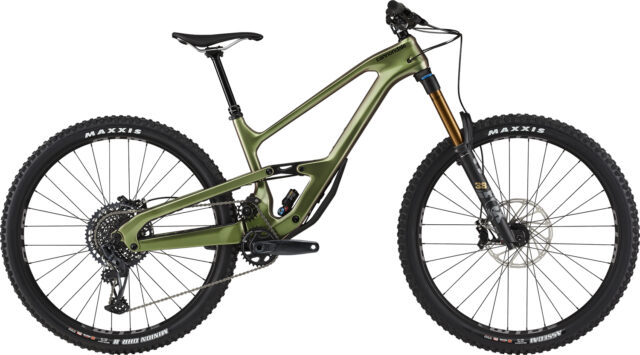
Intro
High-pivot bikes have been having a bit of a resurgence of late, starting mostly with DH bikes — including the new Trek Session, the Commencal Supreme, and a number of others. Enduro / Freeride bikes are joining the party too though, including the Forbidden Dreadnought, Norco Shore, and as of today, the all-new Cannondale Jekyll.
There’s a lot more that’s interesting about the new bike than just the high-pivot suspension though, so let’s take a look at what else Cannondale has cooked up in the latest iteration of their long-travel Enduro bike.
The Frame
The Jekyll frame is only offered with a carbon frame and features a Horst link layout, with the shock tucked inside the downtube and driven by the upper rocker link. It’s actually quite similar to the wild dual-shock DH bike prototype that Cannondale’s team was riding on the World Cup circuit a few years ago, just with the upper shock removed. While that particular bike never made it to market and the Cannondale DH race program was shelved, it seems fairly clear that that particular project led in part to what would become the new Jekyll.
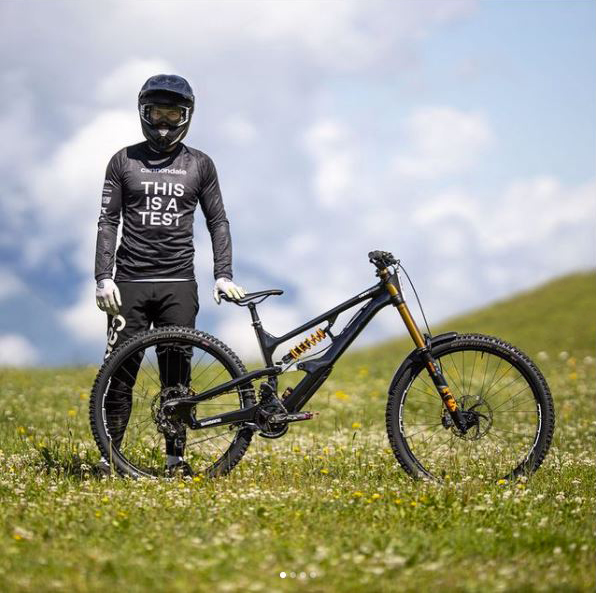
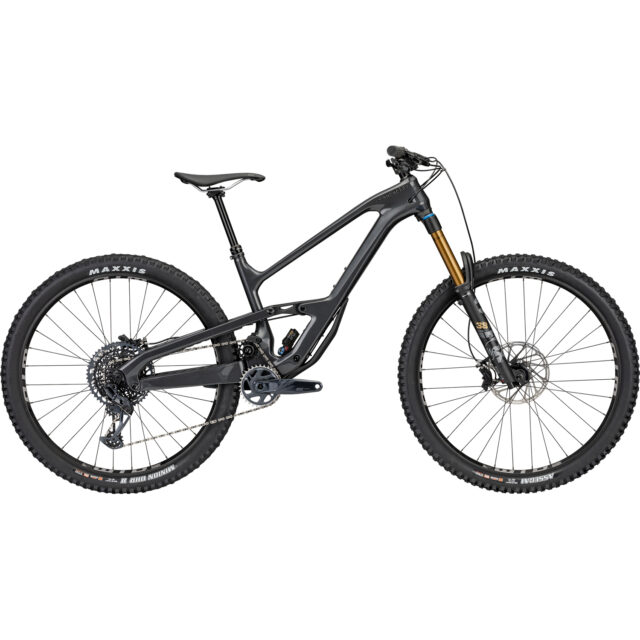
As you’d expect for a high-pivot bike, there’s an idler pulley to guide the chain upward from the chainring before routing it rearwards to the cassette. Cannondale calls it a “Guidler” in reference to the included chain guide on top of the idler pulley (i.e., “guide” + “idler” = “Guidler”), and in the case of the Jekyll, it’s fixed to the main frame. The lower two bolts from a set of ISCG-05 tabs are included if you want to run a direct mount bashguard, but the Guidler makes the upper bolt (and any chainguide that would mount to it) unnecessary and incompatible.
[If a bit of a refresher on what we mean by a high-pivot bike would help, check out the “Suspension Kinematics & Designs” section of our Mountain Bike Buyer’s Guide, starting on page 68.]
As you’d expect for a modern Enduro bike, the Jekyll comes with molded rubber guards on the seatstay and chainstay. Cable routing is fully internal, the bottom bracket shell is threaded, and there are additional guards on the downtube to cover the shock, and above the main pivot to shield it from gunk thrown off the rear tire. Cannondale says that the low placement of the rear shock helps lower the center of gravity of the bike, and it also makes room for a water bottle inside the front triangle on all sizes.
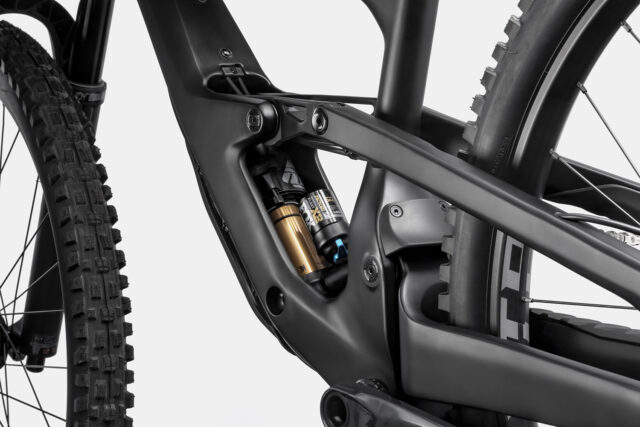
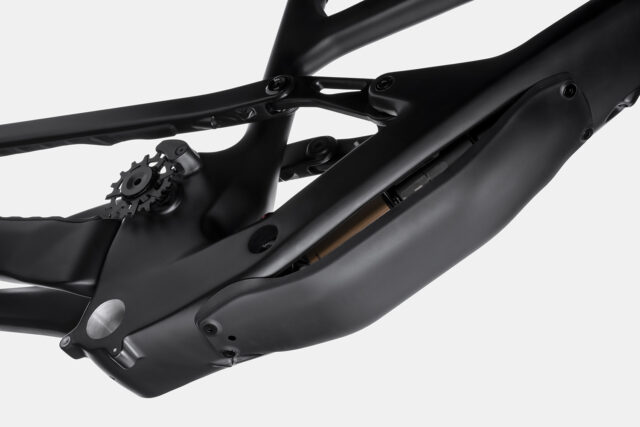
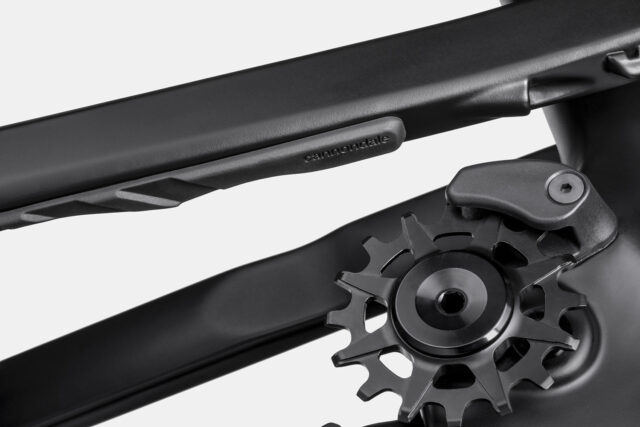
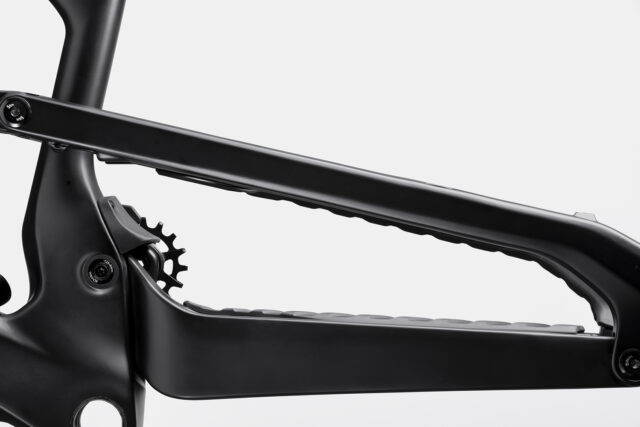
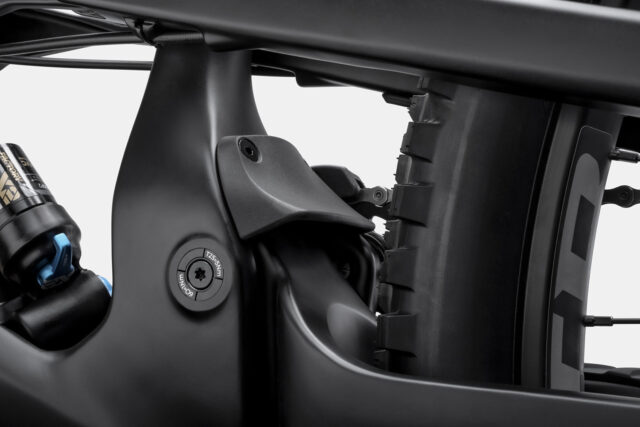
Speaking of sizing, Cannondale makes note that they’ve tweaked the suspension kinematics for each size of the frame individually, and they publish graphs showing the changes to the kinematics with each frame size. In particular, Cannondale correctly notes that anti-squat and anti-rise are dependent on the height of the center of gravity of the bike / rider system, and in calculating that data, an estimate of where it falls is required. It seems fair to assume that taller riders on larger size bikes will generally have a higher center of gravity (though of course, that’s a moving target — a rider doesn’t sit stationary on a bike) but most bikes don’t tweak their pivot locations to account for that change in height between different size frames.
The leverage curves for the Jekyll are overall fairly linearly progressive, but the Small size in particular has a slight digressive portion early in the travel. The initial leverage ratio varies from about 2.5:1 on the Small to just over 2.8:1 on the XL, and all end up in the vicinity of 2.2:1 to 2.3:1 by bottom out. The curves also indicate slight variations in total travel between frame sizes, with the Small bike falling a little short of the stated 165 mm of rear-wheel travel. This is actually a lot more common than you might think, especially on bikes that vary chainstay length by size (as the Jekyll does — more on that below) and it’s nice to see Cannondale being somewhat open about it.
Typical of a high-pivot bike, the Jekyll has a substantially rearward axle path. Though, as with the new Trek Session, the Jekyll’s axle path isn’t super aggressively rearward and begins to come back forward around 100 mm into the travel. As we’ve found in our time on the Session so far (and discussed on Episode 70 of Bikes and Big Ideas), that feels like a good way to balance the benefits of a high-pivot design when it comes to bump absorption, without introducing too much weird behavior when trying to pump the bike through rolling terrain, preload off jumps,etc. And according to Cannondale’s published data, the new Jekyll has essentially zero pedal kickback anywhere in the travel.
Interestingly, the Jekyll only has about 80% anti-squat around the sag point, which is far less than on most modern Trail and Enduro bikes. Coupled with the complete absence of pedal kickback and rearward axle path, we’d expect this to make for exceptionally active-feeling suspension, but are curious to see how efficient it feels when pedalling, given the relatively low anti-squat values.
One quirk of the Jekyll is that it uses Cannondale’s “AI Offset” wheel alignment — essentially a standard Boost wheel, but dished 3 mm towards the non-drive side. Cannondale says this makes for a stronger wheel due to more even spoke bracing angles, and improves the chainline as well. Guerrilla Gravity does essentially the same thing on their Smash, Gnarvana, and prior-generation Trail Pistol, and on those bikes, we didn’t find it to make a huge difference one way or the other.
Fit & Geometry
Cannondale offers the Jekyll in four sizes, from Small through Extra Large, with reaches ranging from 425 through 510 mm; the Medium and Large bikes come in at 450 and 575 mm, respectively. All four sizes get a 64° headtube angle and 77.5° effective seat tube angle. The actual seat tube angle isn’t stated, but doesn’t appear to be unduly slack for a modern Enduro bike.
Cannondale has joined in on the increasingly common trend of varying chainstay length by frame size, with the Small Jekyll getting slightly-short-ish 430 mm chainstays, which grow to 450 mm for the Extra Large. Short 44mm-offset forks are standard, and the Jekyll gets a fairly standard 30 mm bottom bracket drop in all sizes. All that adds up to wheelbases that range from 1,193 mm on the Small through a quite-long 1,311 mm on the XL; the Medium and Large come in at 1,227 and 1,264 mm, respectively. You can see the full geometry chart below:
Overall, these are nice, tidy numbers for a modern Enduro bike. The reach and headtube angle aren’t quite as aggressive as some of the more extreme examples out there (notably the new Transition Spire) but seem like they should make for a bike that’s quite capable and stable at speed, but one that we don’t expect to be a totally one-dimensional, downhill-only sled.
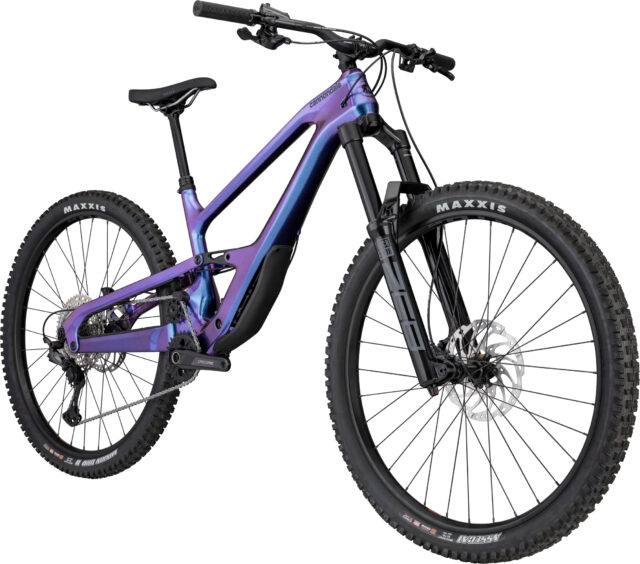
Options, Pricing, & Builds
Cannondale is offering the Jekyll in two different builds, the Jekyll 2 and Jekyll 1, priced at $4,400 and $6,100, respectively. Here are some of the build details for both:
Jekyll 2: $4,400
- Drivetrain: Shimano Deore
- Brakes: Shimano Deore 4-piston
- Fork: RockShox ZEB Select
- Shock: Fox Float DPX2 Performance
- Wheels: WTB STX i30 Rims w/ Shimano MT400 hubs
- Dropper Post: TransX (S: 130 mm; M–XL: 150 mm)
Jekyll 1: $6,100
- Drivetrain: SRAM GX
- Brakes: SRAM Code RSC
- Fork: Fox 38 Factory
- Shock: Fox Float X2 Factory
- Wheels: WTB KOM Trail i30 Rims w/ Formula front / SRAM MTH 700 rear hubs
- Dropper Post: Cannondale DownLow (S: 125 mm; M–L: 150 mm; XL: 170 mm)
Overall, these are sensible builds that spend money where it matters the most (suspension, brakes) and save in other areas (drivetrains, wheels) where it’s a bit less important for a fairly gravity-oriented bike. My biggest quibble is that I’d love to see longer-travel dropper posts, particularly on the larger sizes, but I’ve been spoiled by 200+ mm posts and swapping in a longer one isn’t terribly hard or expensive. Overall, both of the Jekyll builds are quite solid value for the price, and we’re fans of the priorities that Cannondale chose for them.
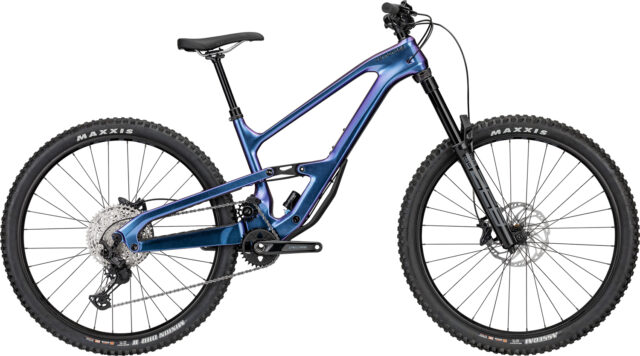
Some Questions / Things We’re Curious About
(1) The benefits of a high-pivot suspension layout are well proven for Downhill bikes, but how will they translate to a bike that’s meant to pedal back to the top, too?
(2) We fully expect the suspension performance of the Jekyll to be quite good on the way down, but how well will it pedal, given its rather low anti-squat values?
(3) And on a related note, how well will the Jekyll handle more mellow, rolling terrain?
Flash Review
Blister Members can read our Flash Review of the Jekyll for our initial on-trail impressions. Become a Blister member now to check out this and all of our Flash Reviews, plus get exclusive deals and discounts on gear, and personalized gear recommendations from us.
The Bottom Line (For Now)
The outgoing Jekyll was looking a bit long in the tooth, but the new 2022 model is a big step forward for Cannondale, with a new high-pivot suspension layout and dramatically modernized geometry. We’ve got one en route for testing and are looking forward to spending a lot of time on it soon, so stay tuned for a full review to come.
FULL REVIEW
Intro
High-pivot bikes are having a resurgence in popularity of late, and the layout is now trickling down to Enduro bikes as well — including the Norco Range, Forbidden Dreadnought, and GT Force — as well as the Cannondale Jekyll that we’re reviewing here. And having spent time on a bunch of modern high-pivot bikes, it’s become clear that there’s a pretty big range of behavior that designers can tease out of the layout, and it’s definitely not correct to look at them all as being uniformly similar, just owing to that one common design trait. The differences are actually pretty striking — and there’s a lot to dive into here.
Unfortunately, my time on the Jekyll was cut slightly short when it was stolen off the back of my truck — hence the lack of photos of me in the review — but I had spent enough time on it at that point to do the review justice. So here we go.
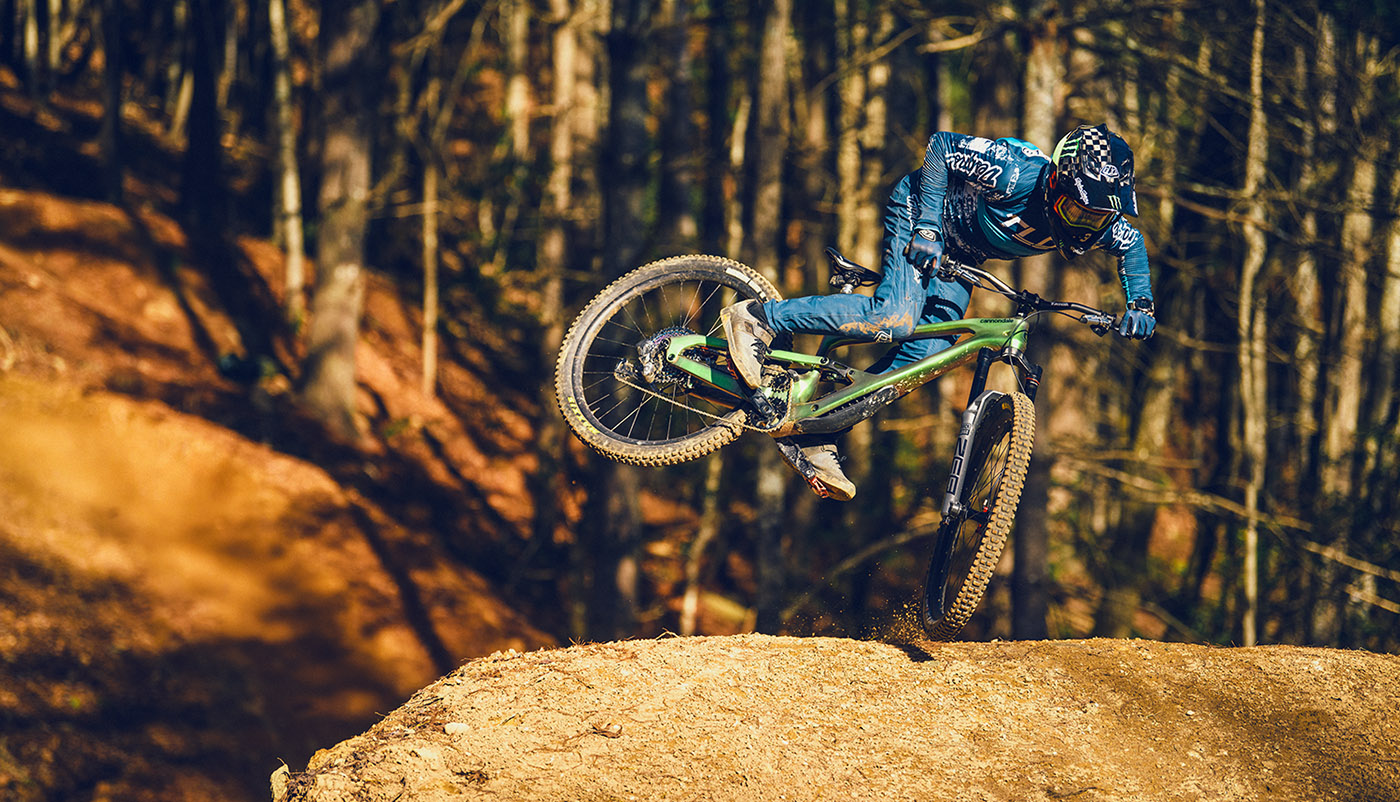
Fit & Sizing
At 6’ (183 cm) tall, I’m right on the border of Cannondale’s recommended sizing between the Large and XL sizes, which I think is about right. The 475 mm reach on the Large that I tested is a touch on the short side for my usual preferences for this sort of bike, but the jump up to the XL, at 510 mm, is a big one. My other concern with sizing up would be the seat tube length — the 170mm-drop stock seatpost would fit alright, but I found myself wanting to go to a longer-stroke post on the Jekyll — more on that in a minute — and the quite-long 500 mm seat tube on the XL would limit my options there. Cannondale also varies the chainstay length by size — a move that we’re fans of, as I described in our First Look above — but the very-long 450 mm chainstays on the XL would make me a little more reluctant to size up. Between the extra 35 mm of reach and 8 mm of chainstay length, the wheelbase on the XL is very, very long at 1,311 mm, and my hunch is that it would be a lot of bike for me to muscle around.
I did swap out the stock 35 mm long stem and 780 mm rise bar to a 40 mm long, 800 mm wide combo to stretch the cockpit out a little bit and calm the steering down a touch. Stem length and bar width are definitely not one-size-fits-all items, but for a big burly Enduro bike I would rather see a wider bar spec’d stock — it’s easier to cut a bar narrower than to make it wider, after all. And with those tweaks to make the bike fit a touch bigger, I wasn’t really tempted to size up to an XL for all the reasons I just mentioned. A size in between the actual Large and XL would probably be strictly ideal for me, personally (it feels like I’ve been saying that about a lot of bikes recently) but I do think staying with the Large was the right call, rather than bumping up to the XL.
And overall, I was happy with the fit on the Large Jekyll. The pedaling position is good, with a steep (77.5° effective) seat tube angle, which does a good job of keeping you centered on the bike when the climbs get steep, without being so steep as to feel awkward under seated pedaling on flat ground. And while a slightly longer reach would be ideal for me, personally, the fit of the Large Jekyll is pretty typical for a modern size Large Enduro bike, in a good way. It’s intuitive and easy to get along with.
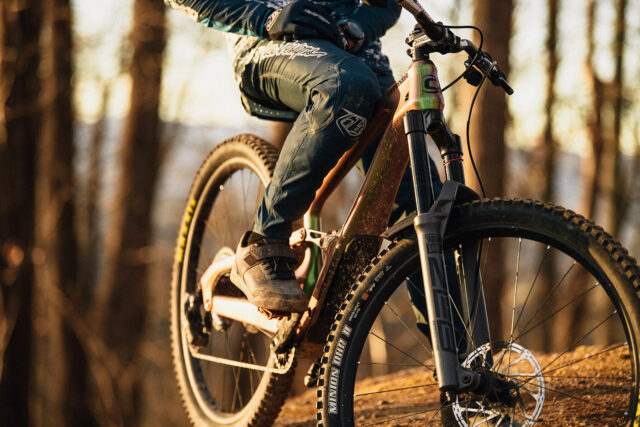
The Build & Frame Details
I tested the Jekyll 1, the higher-end of the two builds that Cannondale currently offers, which mostly does a good job of offering top-tier performance where it counts, and saving a bit of money where it can — and at $6,100, it’s overall quite a solid value for what you get. First, the good stuff: the Fox Factory 38 and Factory Float X2 suspension is excellent, and the SRAM Code RSC brakes are a welcome choice — especially with the 220 mm front / 200 mm rear rotor combo that Cannondale opted for. I’m all for putting big brakes on this sort of bike for more power and better heat dissipation, so kudos to Cannondale for that touch. The SRAM GX drivetrain isn’t especially fancy but works just fine, and Cannondale absolutely made the right call spending money on top-tier suspension and brakes over a fancier drivetrain for this sort of bike.
There are a couple of areas for potential improvement, though. As I noted above, when talking about the Jekyll’s fit, I’d like to see a wider bar and a longer dropper post on the larger sizes of the Jekyll. There is probably a case to be made that the 170 mm dropper makes sense on the size Large, to make sure folks at the shorter end of its size band can get the post low enough, but it’s awfully short for the XL. And even if I hadn’t wanted to swap to a wider bar on the Jekyll, I would have put something else on for ride quality reasons — the Cannondale-branded 35 mm carbon bar that came stock is quite notably stiff and harsh feeling, at least for my preferences.
The WTB rims on the stock wheels also didn’t seem especially stout, and I put a couple of sizeable dents in the rear one in my time on the Jekyll. None of them were so severe as to cause a rim failure or prevent it from sealing tubeless, but a few more of those and the rim would likely be on life support. Of course, at $6,100 for a build with a bunch of top-of-the-line parts on it, Cannondale had to save a bit of money somewhere, and I think that the tradeoffs they chose are generally sensible. But the wheels would be the first thing I’d look to upgrade on the Jekyll 1, after maybe a wider bar and/or longer seatpost, depending on your preferences.
Beefier tire casings also might have helped keep the wheels in better shape — though, on the flip side, the propensity of the stock rims to dent might have helped save the Exo+ casings from pinch flats. DoubleDown casings (and maybe stickier MaxxGrip rubber, at least for the Assegai front tire) would be nice, but I’m definitely nitpicking now. It’s basically impossible to please everyone with a stock tire choice, and they’re both a relatively inexpensive thing to swap, and a wear item that you’re going to have to swap sooner or later.
Cannondale touts the “Gravity Cavity” (their name for the opening in the downtube that houses the shock) as allowing for a lower shock placement and consequently lower center of gravity of the bike, and that definitely checks out. But it also makes for a couple of minor quirks that are worth noting. The first is that access to the shock isn’t great. Both compression adjustments and the low-speed rebound knob on the Fox Float X2 on the Jekyll 1 that we tested are plenty reachable, but it’s tough to get to the climb switch when on the bike, and the high-speed rebound adjuster is buried deep inside the frame. And because the forward shock mounting bolt is also buried inside the Gravity Cavity, getting to the HSR knob requires removing the downtube guard and both of the trunnion mount bolts from the lower shock mount and swinging the shock down through the opening in the bottom of the downtube. It’s certainly not the end of the world for an adjustment that’s probably going to be set-and-forget for most people, but it is a headache until you get there. I also had pebbles get caught in the Gravity Cavity once or twice and rattle around until I turned the bike over to shake them out. There are openings on the sides of the downtube guard so that water and smaller particles (mostly) drain out, but the occasional marble-sized rock would find itself trapped and make some noise.
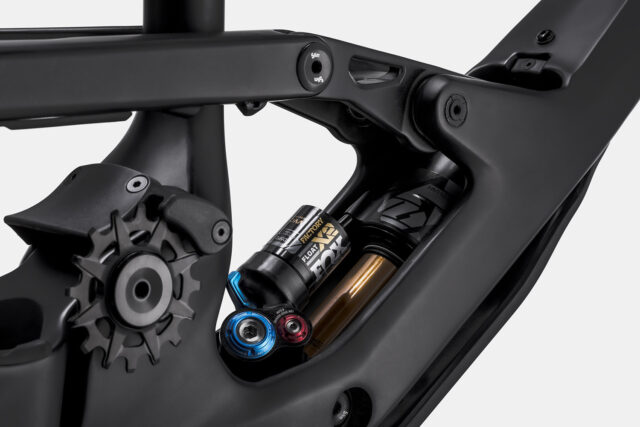
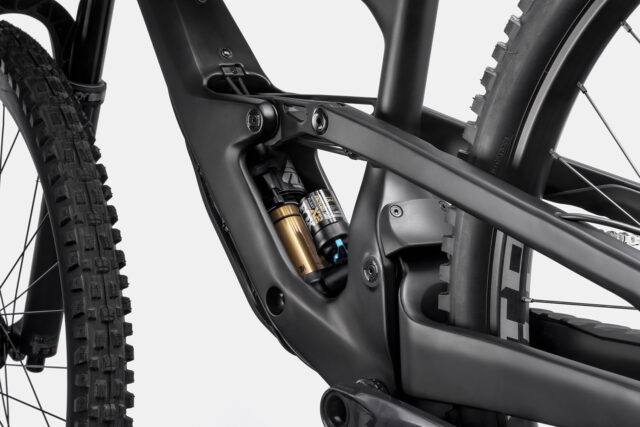
Climbing
The Jekyll is a big, burly Enduro bike that’s definitely more at home sitting and spinning up a climb than it is trying to get that part of the ride over with quickly, but it’s surprisingly efficient for what it is — especially given the notably low anti-squat values that Cannondale lists for the bike. Nobody’s going to mistake the Jekyll for a much shorter-travel Trail bike or anything like that, but its pedaling performance is above average for a 160+ mm travel Enduro bike. The Jekyll is especially adept at grinding its way up a fire road or more moderate climbing trail. As tends to be the case for these sorts of long-wheelbase Enduro bikes, the Jekyll does start to feel a bit more cumbersome than a lot of shorter travel, more compact Trail bikes when climbs get tighter and more technical, but it’s by no means out of the ordinary there — it just doesn’t magically circumvent the tradeoffs that you typically see with these sorts of bikes, either.
As with the other high pivot Enduro bikes we’ve been on, there’s a little bit of noise and drag from the idler pulley under power, but it’s very minor as long as you keep the chain at least moderately clean and well-lubed. The added drag and noise do become more apparent if you get lax when it comes to chain cleanliness — but again, the Jekyll isn’t out of line with other high pivot bikes on this front (and is probably a bit quieter, overall, than the Forbidden Dreadnought in particular). The noise does increase notably in the 52 tooth low gear, presumably due to the increased chain angle, but is much more moderate everywhere else in the cassette.
Overall, the Jekyll climbs impressively well for being a 160+ mm travel, high pivot bike — and it’s hard to overstate how much more efficient it is than the Norco Range in particular. Go read that review for more on the Range’s climbing performance, but the Jekyll and Range feel remarkably different on the way up, given their similarities on paper. It’s not the absolute most efficient Enduro bike that we’ve been on — the Privateer 161 still reigns supreme there — but it pedals way better than I expected it would, given the added drag an idler inevitably introduces and the notably low published anti-squat values. And the suspension does a solid job of remaining somewhat active under power, despite how efficient it feels. Climbing traction feels about middle-of-the-road for this sort of bike, which, given the above-average efficiency that the Jekyll offers, is impressive. Those two traits tend to be fairly directly in conflict with each other, and the combination of the two that the Jekyll displays works very well, given its intended use.
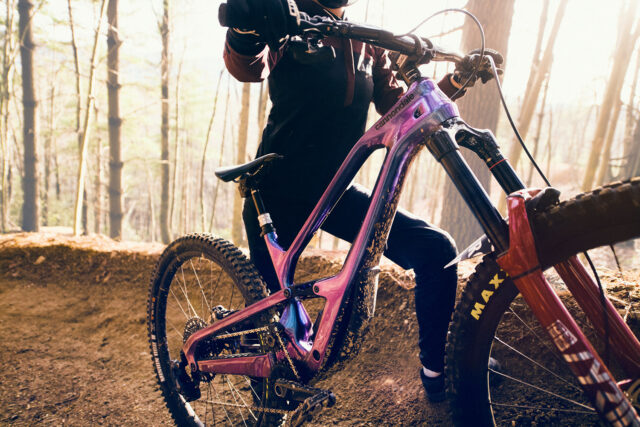
Descending
Cannondale intends for the Jekyll to be a game-on Enduro race bike, and it’s definitely very capable when being pushed hard. It’s stable, composed, and fairly planted without feeling as completely glued to the ground as the Norco Range — kind of our gold standard for a supremely stable, planted Enduro bike. The Jekyll is a bit more lively and significantly less one-dimensional than the Range, but not as exceptionally smooth and planted, either.
I wrote in my Flash Review that the Jekyll feels surprisingly versatile for what it is, and while I still think that’s sort of true, there’s a little more nuance to it than I described in that early take. Let me explain.
A lot of what I was noticing when I wrote the Flash Review is that (1) the Jekyll pedals surprisingly well (go read the “Climbing” section again if you’re unclear on that) and (2) that it does a good job of not feeling particularly awkward and cumbersome in tighter spots and at lower speeds, particularly compared to a lot of other big Enduro bikes, such as the Norco Range or Privateer 161. And while I still think that’s true, where my take has evolved a little bit is that, while the Jekyll does a good job of not feeling wildly out of place in those situations, it doesn’t really come alive until you start pushing it harder and picking up a good bit of speed, either.
And the suspension performance is a big part of that. In particular, the small bump performance feels a bit lacking if you’re taking it easy and not pushing the Jekyll a bit. Get on the gas and start hitting stuff harder and it all starts to click. The Jekyll is just much more supportive and composed than it is plush and cushy, and the suspension takes a bit of speed and aggression to really start to come into its own.
To be clear, I don’t think that’s really a problem for most riders who are going to use the Jekyll as intended, and I’d say the same thing re: small bump sensitivity about some of my favorite hard-hitting Enduro bikes, perhaps most notably the Privateer 161. And as we’ve been talking about a lot recently at Blister — including in recent episodes of Bikes & Big Ideas with Neko Mulally and Darren Murphy of Push Industries — these things come as tradeoffs, rather than some best-of-all-worlds combination being possible. Very plush, cushy bikes tend to give up a whole lot of support and chassis stability when you start pushing them harder, for example, and given what Cannondale intends for the Jekyll — “developed for the most demanding riders to rule the most demanding terrain,” as they put it — I think that’s a sensible tradeoff. But it does mean that folks who are in the market for a long-travel Enduro bike because they want a super forgiving bike that really irons out every bit of trail, even at mellower speeds, are going to be better off elsewhere.
The Jekyll also corners best when it’s up to a bit of speed, but again, does a nice job of not feeling particularly awkward and cumbersome in tight spots, given its long wheelbase, slack headtube angle, and so on. On certain other high-pivot bikes — notably the Forbidden Dreadnought — I’ve struggled with feeling like the balance point on the bike changes dramatically as you load up the suspension into a corner and the rear end grows longer, due to the rearward axle path. And while the rear end of the Jekyll feels long-ish, it’s intuitive and doesn’t display much of that awkwardness.
As tends to be the case with bikes with longer chainstays (and I’m counting the Jekyll in that camp, due to the more rearward than average axle path, despite the static measurement of 442 mm on our Large test bike being more middle-of-the-road for this sort of bike), the Jekyll does prefer a somewhat more neutral, centered stance as opposed to a very aggressive, forward body position, but it also doesn’t feel like you need to move around through a corner to counteract the changes in balance that can plague certain other high pivot bikes. And I think that the fact that the axle path on the Jekyll isn’t that rearward probably goes a long way toward explaining why.
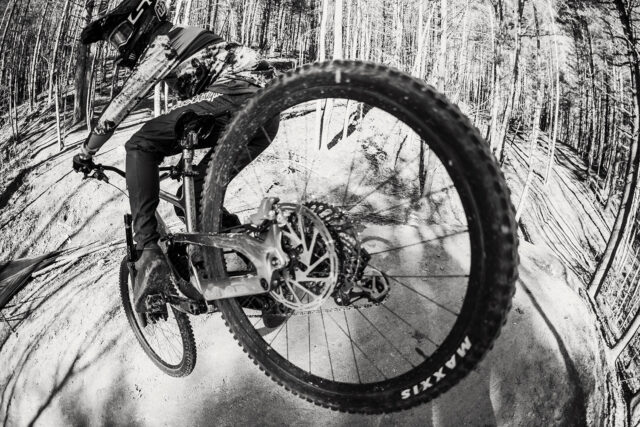
We’d count any bike with a high enough main pivot (be it a physical or virtual one) to require an idler pulley as being a “high pivot” bike, and by that definition, the Jekyll qualifies. But compared to a lot of other high pivot bikes, including the Dreadnought and the Range, the Jekyll’s main pivot is a lot closer to what you’d find on a more conventional Horst link layout. As such, the axle path is only rearward through just over halfway through the travel, before coming back forward. That’s still more rearward than a conventional Horst link bike — which might be rearward for only 20-25% of the travel — but not wildly so. The Jekyll is a lot more similar to the Trek Session in that regard — which I also found to be super intuitive in terms of its handling — so perhaps it’s not such a surprise that the Jekyll doesn’t feel wildly over-the-top on that front.
The main benefit that gets touted of a high-pivot layout, and the rearward axle path that results, is that it helps the bike absorb square-edged bumps and carry speed through rough sections of trail. In theory, a more rearward axle path means that the wheel can move up and out of the way when you hit a bump at speed, instead of getting hung up as the wheel moves up and forward. And that benefit does feel like it’s borne out on the Jekyll — just to a slightly more moderate degree than the Range, in particular, and also the Dreadnought to some extent. And given the Jekyll’s less aggressively rearward axle path, that makes sense. One thing that I wondered going into the test was whether the upsides of the high pivot layout on the Jekyll would be dramatic enough to justify the downsides in terms of drag and pedaling efficiency, given its more moderate implementation of the layout. But having now ridden the Jekyll, I think Cannondale has hit on a really nice middle-ground for this sort of bike. The Jekyll pedals very well — there’s definitely a little extra drag in the drivetrain, but it’s moderate enough and the pedaling performance is otherwise good enough that it’s not a big deal. And so the result is a bike that does carry speed through rough sections quite well, without introducing much of the handling quirkiness that you can get from high pivot bikes.
To summarize, the Jekyll feels like a game-on Enduro race bike first and foremost and is going to work best for riders who have both the terrain and aggressive approach to riding to put that sort of bike to work. But what’s most impressive — and maybe most surprising — about the Jekyll is that it does all that while also feeling as content as it does in mellower terrain. That’s not to say that it excels as an easy-going Trail bike, exactly — nothing with 165+ mm of travel at both ends and these kinds of geometry numbers does — but the Jekyll does feel notably less out of place in those situations than most bikes that are as capable as it is when you point it down something steep and let off the brakes. And that seems like a very promising recipe for an Enduro race bike for a lot of riders who want a bike that’s rarely going to feel under-gunned, and yet won’t feel like you’re trying to parallel park a Canyonero in the tighter, jankier bits.
That’s not to say that the Jekyll is only viable as a race bike, but it is going to work best for someone who’s got access to relatively high-speed descents and is generally inclined to push hard and ride them quickly. And particularly if you favor a somewhat more planted feel, and would be willing to trade off a bit of small bump sensitivity for a bit more composure and support from the suspension when the speeds pick up, it’s a really nice option.
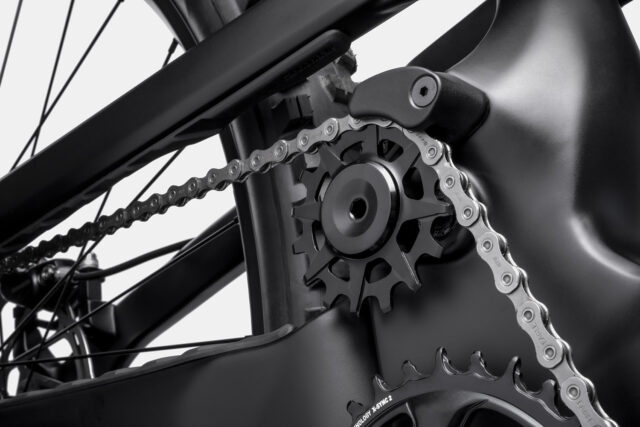
Comparisons
The Jekyll and the Dreadnought feel somewhat similar in terms of fit and suspension performance when plowing through rougher sections of trail, but the differences elsewhere are significant. The Jekyll pedals more efficiently, has substantially better suspension performance under braking, and feels much more neutral and intuitive when cornering at speed. The Dreadnought is slightly more stable, has a stiffer rear end, and has an option for a mullet configuration that the Jekyll doesn’t offer.
At least that’s true for the size Large versions of both bikes that we tested. As I wrote in our full review of the Dreadnought, Forbidden changes the chainstay length between sizes by an unusually large degree, and my hunch is that its handling is likely to feel significantly different in other sizes. But we’ve only gotten on the Large, so that is definitely speculative.
Despite their similarities on paper, the Range is substantially more bike than the Jekyll, for better or worse depending on how you want to use it. The Jekyll pedals way better and is easier to maneuver in tight spots and at lower speeds, but is less stable at speed and doesn’t match the Range’s frankly outstanding suspension performance in terms of being both sensitive and plush for smaller bumps, while still feeling supportive and not the least bit wallow-y when you start pushing it harder. Riders who either want a bike for mostly mechanized uphill travel that can still pedal a bit, or folks who are very sure that they’re willing to deal with the Range’s sluggish climbing performance for how it feels on the way back down will find a lot to like there, but if pedaling performance is much of a consideration at all, the Jekyll is likely the better call.
This is one of the better comparisons here, but there are still some differences. The two bikes remind me of each other quite a bit in terms of handling, and in how they’re both big, capable, long-travel bikes that do an impressively good job of not feeling awkward and wildly overkill in mellower terrain. But the Jekyll pedals slightly more efficiently, the Gnarvana has much better small bump sensitivity, and the Jekyll feels a touch more stable and composed when really charging in rough terrain.
With the Altitude in the geometry settings that I personally preferred — the slackest setting on the Ride9 chip, and the longer chainstay option — it’s a similar story to the Gnarvana, though the Altitude feels a little more nimble and like a little less bike overall. In the slackest, longest setting, the Altitude is still a bit quicker handling and a touch less stable than the Jekyll; those differences only increase as you move through the steeper / shorter settings. The Altitude’s small bump sensitivity is better, and it’s a touch more lively / less planted feeling than the Jekyll.
Pretty different. Both bikes are above average for long-travel Enduro bikes when it comes to pedaling efficiency, and are only middling when it comes to small bump sensitivity, but that’s about it for similarities. The Jekyll is easier to maneuver in really awkward, tight spots at low speeds — particularly when climbing, when you have to do said maneuvering while also pedaling — but the G1 is even more stable at speed, wants a significantly more forward stance, and actually feels a little sharper handling once you get it up to speed, despite also being more stable.
Super different. The Nomad is much more nimble and easy to throw around, has better small bump sensitivity, and doesn’t need to be going nearly as fast to really come alive. It’s still quite capable of being pushed hard, but feels less game-on and much more playful / freeride-oriented.
The Megatower is a lot closer to the Jekyll than the Nomad, but the Jekyll is more stable and composed at very high speeds, pedals slightly more efficiently, and needs a little more speed to come alive — though to reiterate, it does a good job of not feeling entirely out of its element in mellower situations. Both are fairly game-on bikes in terms of working best when ridden with an aggressive touch, but the Jekyll feels like slightly more bike overall, particularly in terms of handling.
This is one of the better comparisons here. The 161 and Jekyll are both notably efficient for a 160+ mm travel Enduro bike, and their suspension performance feels oriented more towards supportiveness and composure at speed than small bump sensitivity and plushness. Their handling at speed isn’t wildly different, though the 161 is a touch less stable and a little quicker handling when up to speed.
The biggest differences are in the low-speed handling and seated position. The extremely steep seat tube on the 161 feels great on very steep climbs, but also makes the pedaling position a bit awkward at lower speeds and in flatter spots, and the 161 is more of a handful to maneuver in those situations. But it also pedals even more efficiently than the Jekyll, and the rear end feels notably stiffer laterally.
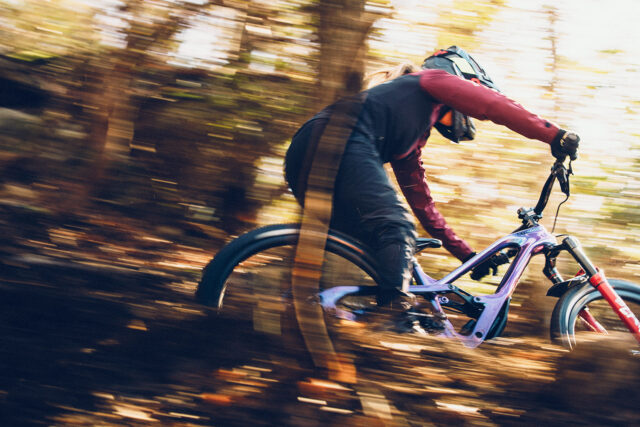
Who’s It For?
The Jekyll is a fairly game-on bike that’s going to work best for riders on the more aggressive end of the spectrum, but it’s also impressively versatile for what it is, and pedals much, much better than I expected it would. And that makes a good case for the Jekyll as an Enduro race bike or an everyday ride for riders who put a priority on riding fast and carrying speed in rough terrain but still want a bike that pedals well and isn’t totally out of place on slower, tighter trails, too.
Bottom Line
The Cannondale Jekyll is a nicely executed take on a modern Enduro bike, with well-balanced geometry, intuitive handling, and very good stability at speed, without feeling totally out of place or unwieldy in tighter spots. And it’s the best pedaling of the high-pivot Enduro bikes that we’ve tested to date, by a healthy margin. There are only two builds on offer, and the parts spec on even the top-end Jekyll 1 has a couple of notable areas where it could be upgraded, but the $6,100 price tag starts to look pretty good when you consider that you do get Fox Factory suspension and top-end brakes. The awesome color-shifting paint is a nice bonus, too.

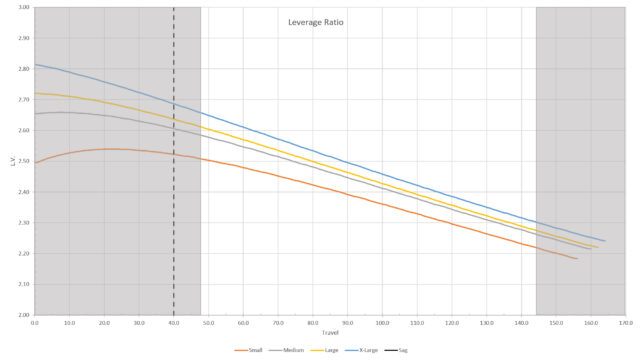
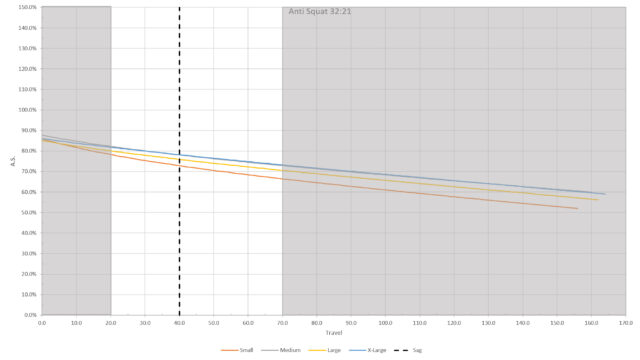
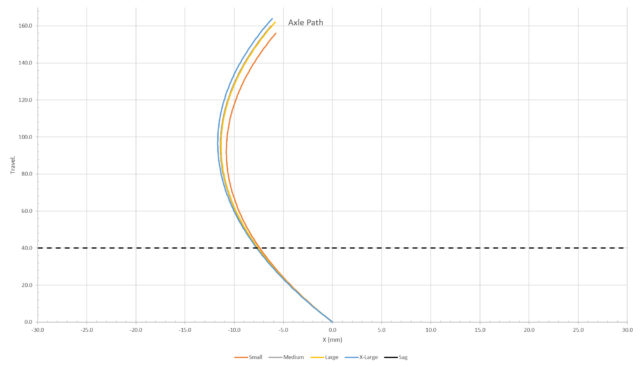
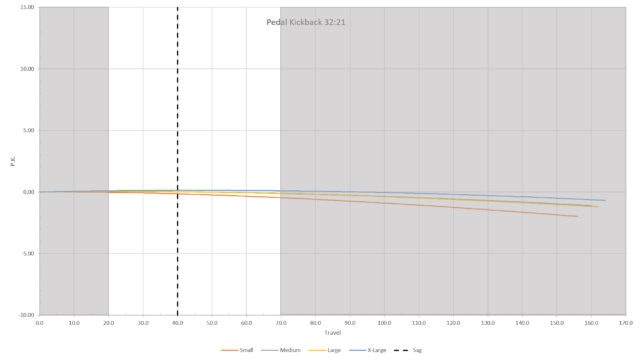
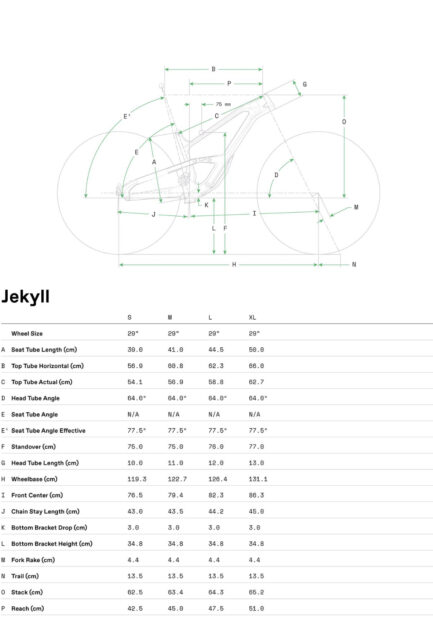
I think the initial leverage ration should be lower for the larger frames and should increase as the frames go up in size, the opposite of what is shown on the chart. Cannondale designed the proportional geometry to not only compensate for rider size but also weight. On the larger frame sizes, like the L and XL, they estimated that the rider is not only taller but also heavier. So if that is true then the initial leverage ratio, up to the sag point, should be lower than the Small frame to add more support for a heavier rider. I can confirm from owning a XL that this feels to be true. At 200lbs I should be on a 450lb spring to get 30% sag, but I’m only getting 20% sag. The initial leverage ration seems to be very low on the XL and it has such a harsh ride because of it, very little small bump compliance. I’ve tested with a Bomber coil and 2024 x2.